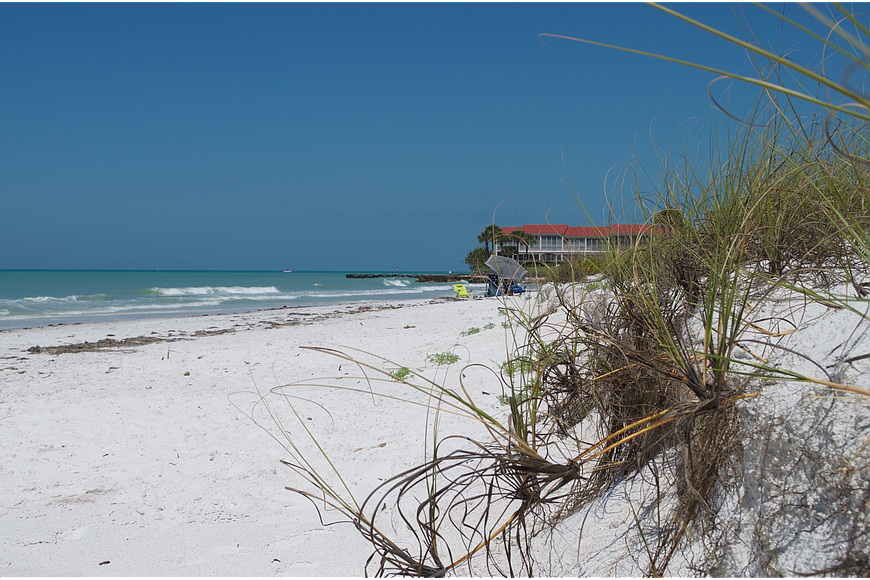- July 26, 2024
-
-
Loading

Loading

The town of Longboat Key is sorting out the budget for its comprehensive beach management plan, Public Works Department project manager Charlie Mopps said.
Bayside District and Gulfside District voters in Sarasota and Manatee counties on March 17 approved a plan to borrow no more than $34.5 million in bonds to finance a series of beach maintenance projects.
Gulfside property owners will pay 80% of the debt through property taxes; with Bayside property owners paying 20%. Had Bayside owners rejected the proposal, the burden of 100% of the debt would have been passed on to Gulfside property owners.
Mopps did not provide an exact total on borrowing or the plan’s impact on tax bills. because the level of borrowing needed is not yet known. However, the $34.5 million max-total is derived without factoring in state and federal reimbursements.
“I wouldn't have an expectation as far as how much, but as far as being able to get the funds, I would say our chances are great,” Mopps said. “In the past, and I’ve publicly said this, we've been 100% successful.”
Mopps said sometimes the town gets reimbursed years after a beach management project is completed. He said the town is still being reimbursed for projects dating back to 2016.
According to Mopps, state reimbursement depends on how Longboat Key's comprehensive beach management plan ranks compared to other projects throughout Florida.
"Your project might move up because some of those other projects got complete, and now you have the opportunity to get those funds," Mopps said.
The town wants to pay off the bond debt in eight years or less.
Overall, the town plans to pour more than 1 million cubic yards of sand in four erosional hotspots: the north end, a stretch around Whitney Beach, a larger spot on the mid-island and the area north of New Pass.
Manatee County leaders have committed more than $2.5 million to help pay for the initial project of the plan – the $10 million construction of five sand-saving groins to be built on the northern end of the island.
Mopps said the area around Greer Island — also known as Beer Can Island — is one of the island’s most erosional. New Longboat Key Commissioner B.J. Bishop agreed with Mopps on the need to address erosion problems on the north end.
“There's some areas up on the north end that are just critical to get some quick resolution,” Bishop said. “Then continuing to be sure that we maintain our beaches because without the beach A.) it certainly is important to our tourism. But, B.) it's the only thing that keeps the Gulf of Mexico from coming right across Gulf of Mexico Drive.”
The groins are designed to hold sand that had historically been swept away, with some of it flowing into Longboat Pass, cutting off access to Canal 1A, just east of the bridge to Bradenton Beach.
“If you look at the beach the way sand typically moves on the west coast of Florida, it’s from the north to south,” Mopps said. “So, if you have a healthy beach to the north of a location, typically speaking, on the west coast of Florida, then the beaches to the south will be receiving the benefit of that healthy beach, just through the natural processes.”
Mopps said the transport of sand naturally happens through the winter cycle into the summer cycle.
The other parts of the beach plan include:
Mopps said the coronavirus pandemic has not delayed any of the project’s plans so far, and the town is going “full steam forward.”
“We're working with our consultant on doing ... preconstruction-related services,” Mopps said. “So this is the final design, the piping quarters and everything else for the project that we're going to be doing.”
The town’s first beach project was in 1993 to provide “necessary nourishment, dredging, groin installations, and emergency truck haul projects to maintain and protect the shores of Longboat Key.”
In the town's three previous cycles of voter authorization and borrowing for beach projects, about $51 million in borrowing was approved. However, the town ended up borrowing about $40 million.
Before 1993, Mopps said individual groins would hold “some sand in place,” which is why there are sea walls that exist along the coastline.
“This plan is just a continuation of that,” Mopps said. “By putting in new structures, we're also trying to take care of some of the most erosional spots within the island to help in the future alleviate some of that financial stress.”
The town said an engineered shoreline would help with storm surge protection, protect against sea-level rise, increase property values, provide recreational benefits and help create nesting habitats for endangered and protected species.